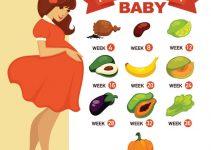
Like many new mothers, you’re probably breastfeeding your child to provide him with essential nutrients and nurture an emotional bond with him. However, the time will come when you’ll have to wean your baby from breast milk and give him the nutrition he needs through other sources. Because of this, you need to know the ins and outs of weaning as early as possible.
The Right Time to Wean
Contrary to popular opinion, there is no “right” time to wean. Every mother-and-child situation is different, so don’t feel pressured to wean your baby just because society tells you to do so.
Experts recommend that you breastfeed your baby exclusively for six months then mix breastfeeding with bottle feeding and solid foods from six months to one year old. However, you can wean your baby before this time frame due to certain circumstances or extend breastfeeding beyond one year if you and your baby both want to.
Types of Weaning
Weaning can be categorized into two: baby-led (when your child initiates weaning) and mother-led (when you initiate weaning). Baby-led weaning happens when your baby becomes more interested in solid foods than breast-milk or when he becomes too active and no longer has the patience to sit still and nurse.
Mother-led weaning, on the other hand, happens when you need to go back to work and can’t breastfeed your child the whole day or when you get sick or pregnant and can no longer breastfeed your baby.
In most cases, baby-led weaning is often easier for moms since they don’t need to do much to discourage their child from breastfeeding. However, it can also make the mother feel hurt and rejected when her baby no longer wants to breastfeed.
Helpful Tips for Weaning
Weaning your baby can be challenging especially if he has clingy tendencies. Fortunately, there are several steps you can take to make the process easier, such as the following:
Adjust the duration and frequency
Slow and steady is the way to go when it comes to weaning. You can reduce the frequency of your feedings; for example, if you feed your child five times a day, drop one feeding and substitute it with bottle feeding.
Stick to this schedule for one week then, on the next week, breastfeed your child three times a day and bottle-feed him twice a day. Continue reducing the number of your breastfeeding sessions on a weekly basis until your child has fully adjusted to bottle feeding.
You can also shorten the duration of your feeding. For example, if your baby usually nurses for ten minutes, cut the time to five minutes. You can then follow up with a bottle of breastmilk or formula or even a healthy snack like cereal and unsweetened applesauce.
Take note that complementing breastfeeding with solid foods is only advisable for babies older than six months; babies less than six months old are usually not yet ready for solids.
Don’t wean during stressful situations
If you’re moving to a new house, or if you and your partner are going through a divorce, you might put off weaning for around a month. These situations can stress out your child and will make him crave the emotional comfort that breastfeeding provides.
If your child is sick, or if he’s teething or experiencing any other development milestone, he might also become less cooperative to wean.
Provide constant emotional support
Breastfeeding provides mother and child with the chance to bond with each other. So, when you wean your baby, make sure to find other ways to show him your love and care. Snuggle with him, read him stories, sing him a lullaby — all of these will make him feel loved and reduce his craving for breastfeeding.
Get help from other family members
Don’t be afraid to ask help when you need it. For example, if your baby won’t accept a bottle from you, ask a grandparent or another family member to give him the bottle while you’re in another room. In many cases, babies will accept a bottle from another caregiver, which will help get the weaning underway.
If you usually nurse at night and in the morning, ask your partner to put your baby to bed and wake him up in the morning. This will give the two of them the chance to bond while ensuring that another emotionally nurturing experience will replace the hole that breastfeeding has left.
Introducing Your Baby to Solid Foods
You can introduce your baby to solid foods when he’s around four to six months old. During this time, he’ll start to lose his tongue-thrust reflex (which causes him to push solid food out of his mouth) and gain the coordination to bring food from the front of his mouth to the back.
Aside from these, there are other signs that your baby is ready for solid foods. These include being able to hold his head upright and sit with support, putting his toys in his mouth, and showing interest when you eat.
When you introduce your child to solid foods, make sure to take note of the following tips:
Start with simple food like single-grain, iron-fortified cereal mixed with breast milk or formula milk (one tablespoon of cereal with four tablespoons of milk will do). Once your baby gets used to this, introduce him to pureed fruits, vegetables, and meats (around four to eight months old). You can move on to mashed, ground, and chopped food when he reaches nine to 12 months.
Introduce solid foods one by one. After giving him cereal, for example, wait for two to three days before you move on to the next kind of food. This way, you can monitor him for allergic reactions and, if he does have them, easily identify which food caused the reaction.
Make sure to include foods that are high in iron and zinc, which are important to your baby’s development from six months to one year of age. Iron-fortified cereal is a good start, as well as beans and lentils.
Studies show that desensitizing babies aged four to 11 months can help prevent peanut allergies. However, it’s still important to consult your pediatrician to know whether you should expose your baby to highly allergenic foods (like eggs, peanuts, and fish) or not. If you decide to do so, make sure to give your child the food at home with some oral antihistamine at hand.
Give your baby time to adjust to the experience of eating. Don’t be discouraged if he makes faces while eating — it’s not a sign that he hates the food! And be prepared to face messes. Babies lack the coordination that adults do, so they might fling food everywhere or smear it on any surface.
Final Note
Weaning your baby is usually not easy. But, when you take the right steps, you’ll eventually get your baby off breastfeeding and introduce him to the wonderful tastes and textures of solid food.



